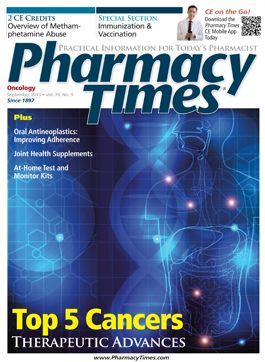Publication
Article
Pharmacy Times
Study Shows Tablet Computer's Use in Hospital Medication Checks
Health-system pharmacists who used a tablet computer to verify medication orders during their rounds spent less time on the task than those who used a traditional computer terminal, suggest the results of a study published in the April 2013 edition of the American Journal of Health-System Pharmacy. Use of the tablets also provided ready access to medical records, medication profiles, and the most recent patient laboratory values, the study suggests.
Researchers from the University of Tennessee College of Pharmacy and Graduate School of Medicine, Wellstar Kennestone Hospital, and Harrison School of Pharmacy of Auburn University aimed to measure the impact of mobile technology devices on medication order verification. They assessed the use of mobile technology devices, specifically the iPad, during pharmacists’ rounds and compared the results with traditional medication order verification using computer terminals. The iPads and the computer terminals used the same computer software to verify medication orders.
The retrospective observational study used data from 129 cases involving 260 medication orders from a large academic medical center during two 1-month periods in 2010 and 2011. The average time to order verification using the mobile device was 7.5 minutes, whereas verification using the computer terminal typically took 38.9 minutes, researchers reported. Noting that hospital operations can delay order entries, the researchers also calculated the time to order verification for medications verified more than 100 minutes after writing for both systems. With those orders 78 included, the time to order verification totaled 17.8 minutes using the mobile device and 41.3 minutes using the computer terminal.
In addition, the mobile order verification system took significantly less time regardless of medication class, the researchers noted. In particular, researchers noted how iPad use permitted the pharmacist to take a more active role in the medication use process, as well as helping to resolve order-related issues during the prescribing process. The ability to access medical records as information was available also proved an asset and facilitated additional discussion between medical team members, the authors noted.
Despite the success of the mobile technology use, the researchers found several hurdles to it. As pharmacists switched floors to check on various patients, the iPad could lose Internet access and connection with the hospital’s virtual private network. This, in turn, required re-establishing connections to the virtual private network and logging into the hospital system again. The iPad keyboard also proved a limiting factor, as no external keyboard devices were used in the study, and the onboard keyboard was considered small. The connectivity problems prompted researchers to investigate other mobile technology offerings, including other types of tablet devices, as well as notebook computers. At the time of publication, alternative devices being tested included the Motorola Xoom, an Android tablet computer, and several Dell brand notebook computers.
Advances in pharmacy practice have created integrated practice models that permit pharmacists full availability to patient care units and during patient rounds, the authors noted. The model allows pharmacists to offer drug information, medication guidance, and individualized therapy. As a result, the authors suggest that use of mobile technology would mesh well with expansion of the health-system pharmacist’s role and could be a powerful tool in providing patient care.
“In order to maintain this accessibility, the use of mobile technology devices such as the iPad is necessary to provide pharmacists ready access to patient medical records, laboratory test values, and medication profiles,” the authors wrote. “The results of this study suggest that the use of a mobile technology device by a clinical pharmacist integrated into medical team rounds can significantly decrease the time to verification for a range of medications.”
“Seemingly, faster verification allows for faster access to medications by nursing staff and, in turn, potential faster administration to the patient,” they added.







